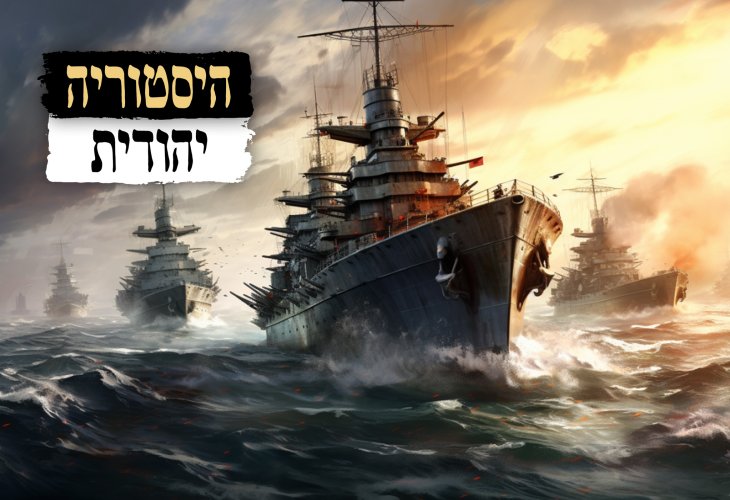When Pirates Ruled the Seas: The Jewish Buccaneers of Jerusalem
In an era when merchants feared the seas, a surprising tale of Jewish piracy emerged from the history of Jerusalem. Discover how they built a fleet and dominated the Mediterranean routes.

For many generations, Canaanites monopolized maritime routes. Our forefathers lived in the highlands, rarely engaging in trade with foreigners. They did not seek luxury items and adeptly managed their lives from the land's abundance.
Even during the Second Temple period, this lifestyle prevailed. Jews resided in Judea, while coastal cities belonged to non-Jewish peoples who followed in the path of the Canaanites, possibly even their descendants.
However, during the Hasmonean era, things changed. The descendants of Matityahu, the High Priest, decided to Judaize the land and expel non-Jews from the historical Land of Israel. Thus, they conquered coastal cities like Akko, Jaffa, and Gaza, each boasting significant ports. From then on, anyone wishing to import goods to Israel could do so through the Hasmonean port!
Unfortunately, Matityahu's grandchildren didn't follow his path. They adopted many of the customs of the Greek kingdom their ancestors had defeated, leading to the emergence of a pirate culture around the Hasmonean-Israeli coastal cities.
In an ancient tomb preserved from the Second Temple era to this day, we find a depiction of Jewish pirates, or at least men of the Hasmonean Jewish kingdom. Known as "Jason's Tomb," located on Alfasi Street in the Rehavia neighborhood, it includes Greek inscriptions such as, "A mighty lament they made for Jason, a lament his friends will make for him, those alive shall rejoice with you," alongside an illustration of a pirate ship chasing two merchant vessels.
According to Josephus (The Jewish War III, 9), this phenomenon of Jewish piracy was prevalent at the time. Since seafaring wasn't highly developed—unlike the 17th century when pirate and merchant ships were equipped with navigation devices, cannons, and preserved food—Hellenistic era sailing was coastal. Ships followed the coastlines at no great distance, making it relatively easy to trace and attack them.
Josephus writes: "They built many pirate ships, plundering the sea routes between Syria and Phoenicia, and between the land of Egypt, so no ship could sail these waters because of their fear and dread."
The Roman general Pompey used this as a pretext to seize Jerusalem from the Hasmonean descendants, claiming that Antigonus was dispatching the pirates to disrupt international trade.
During the Great Revolt against the Romans, which led to the Temple's destruction, Jewish rebels employed pirate tactics to cut off Roman supplies. The Romans frequently purchased grain from Egypt, the Middle East's granary for millennia. Roman grain fleets would travel along the shores from Cairo to Rome.
The Jewish rebels established a fortress in Jaffa, from which they launched attacks using light ships to raid grain ships, set them ablaze, thus disrupting a critical Roman supply line.
General Vespasian retaliated with a deadly military operation on Jewish Jaffa, concluding in victory with a coin named "navalis Judea" minted. Interestingly, a street in Jaffa is named "Maritime Judea" in its memory. However, it's not named after a pioneer of local settlement, but rather a Roman coin marking the destruction of Jaffa's Jews, their sailors, and seamen.

